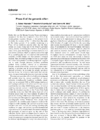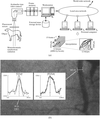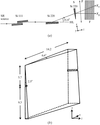issue contents
November 2000 issue

Cover illustration: Schematic representation of the synchrotron radiation microangiography system used for the analysis of angiogenic vessels in cancer, see Sekka, Volchikhina, Tanaka, Hasegawa, Tanaka, Ohtani, Tajima, Makuuchi, Tanaka, Iwata, Sato, Hyodo, Ando, Umetani, Kubota and Mori, pages 361-367.
facility information
editorial
Free 

fast communications
A technique is described that uses synchrotron radiation to make quantitative time-resolved measurements in the high-density core region of fuel sprays.
research papers
The usefulness of a synchrotron microangiography system for depicting, quantitating and therapeutically evaluating angiogenic vessels in cancer is illustrated.
X-ray polarization-contrast images resulting from X-ray linear dichroism in the hard X-ray region have been successfully recorded for the first time.
Similarly to the case of moiré fringes described previously, an unusual spatial oscillation of Pendellösung fringes along the beam path out of the specimen crystal has been found in an X-ray plane-wave topograph experiment. The fringe oscillation observed in topographic images and fringe profiles is described.
The measurement of the sagittal deviation of an X-ray beam diffracted on the inclined surface of an Si(111) single crystal was performed on beamline BM5 at the ESRF, with λ = 0.1 nm and an inclination angle, β, of 70°. The measured value agrees with the theory developed in previous papers.
A novel approach for integration of macromolecular diffraction data is described based on a two-stage radial basis function (RBF) network. The method extends the conventional profile-fitting technique using a concentrated RBF network design.
The design and performance of twin undulator beamlines with spherical-grating monochromators is presented. They are used mostly for high-resolution spectromicroscopy near the C, N, O absorption edges.
The design, fabrication and characterization of a high-efficiency EUV transmission phase grating is presented.


 journal menu
journal menu

































